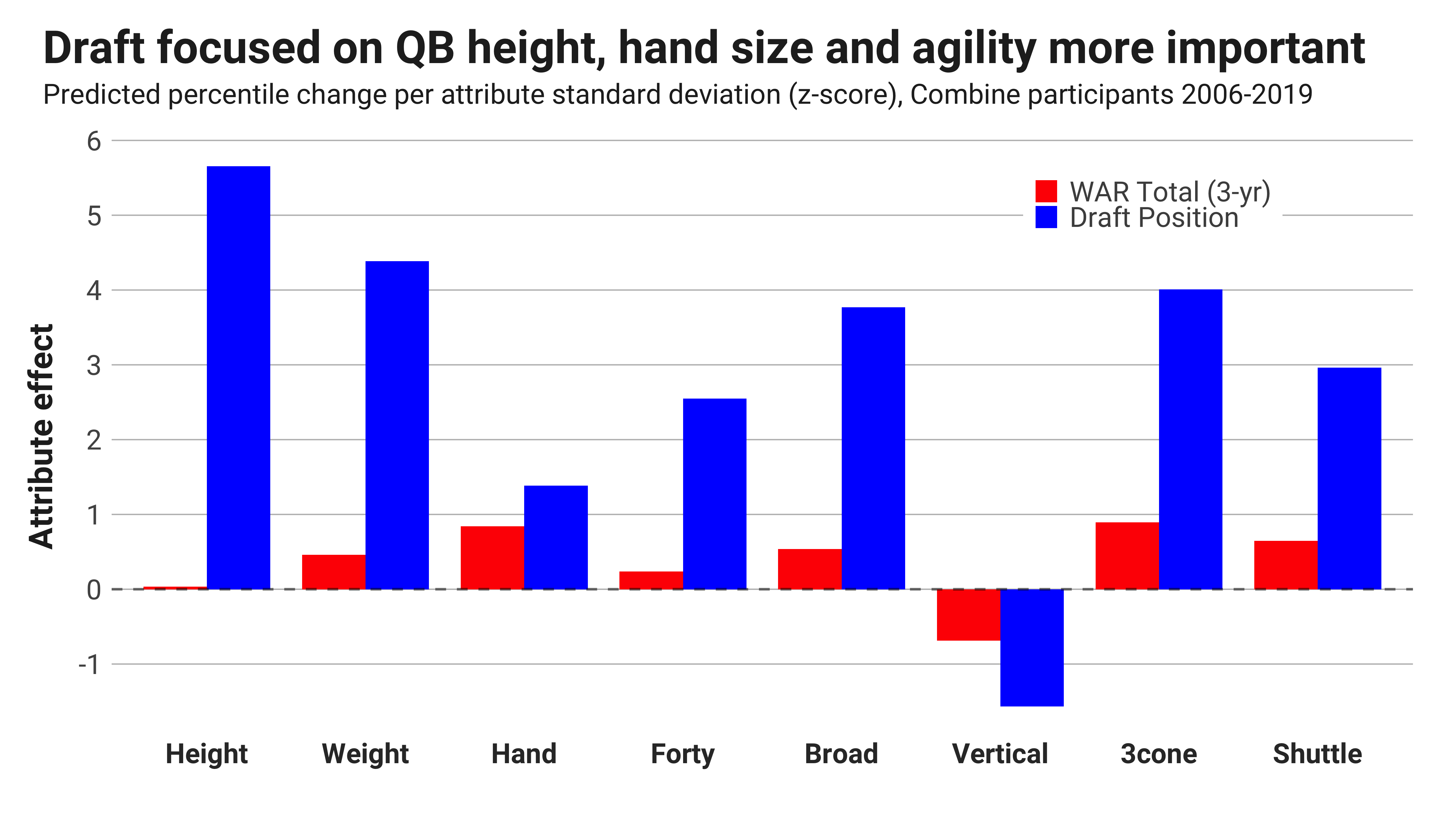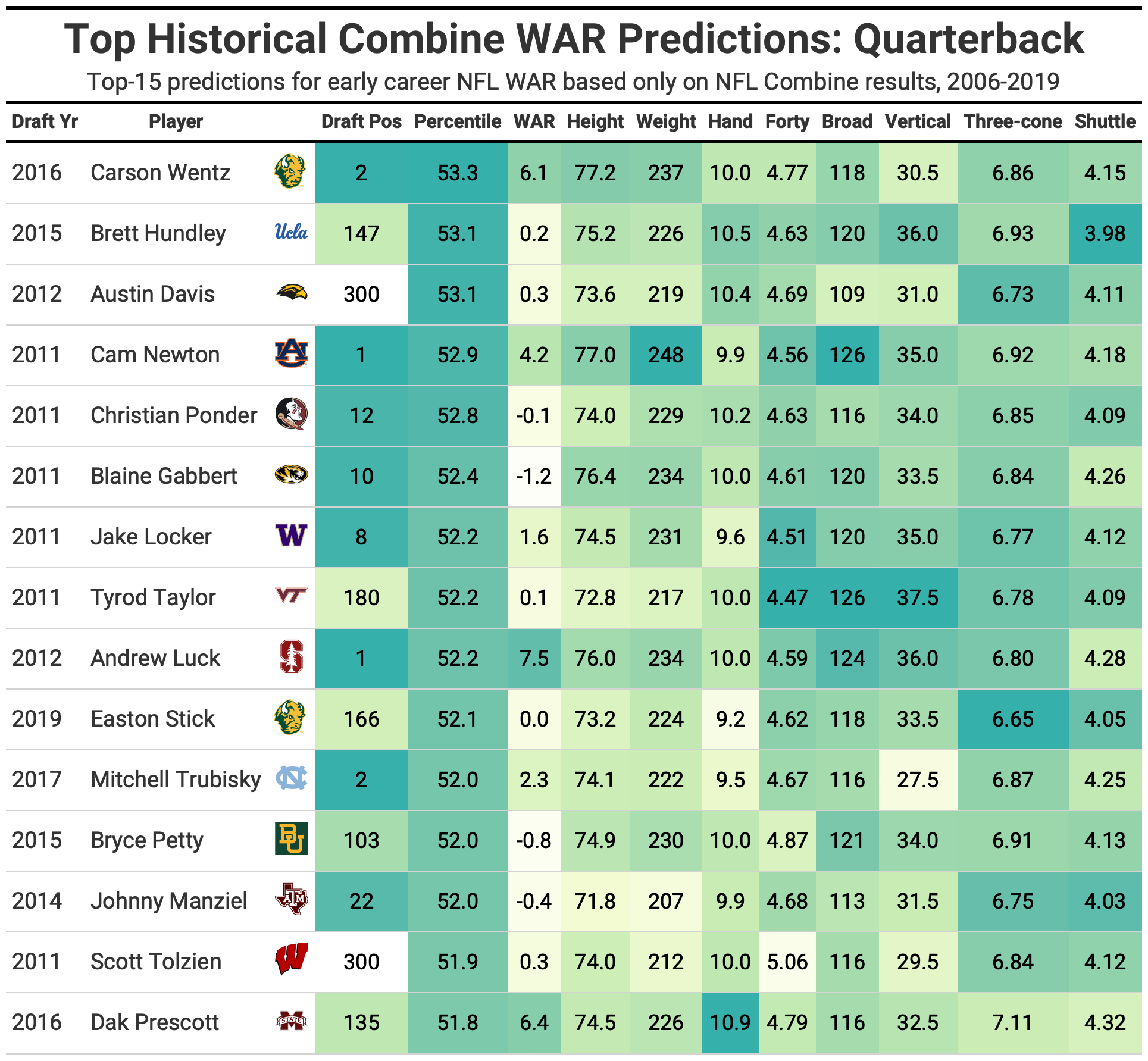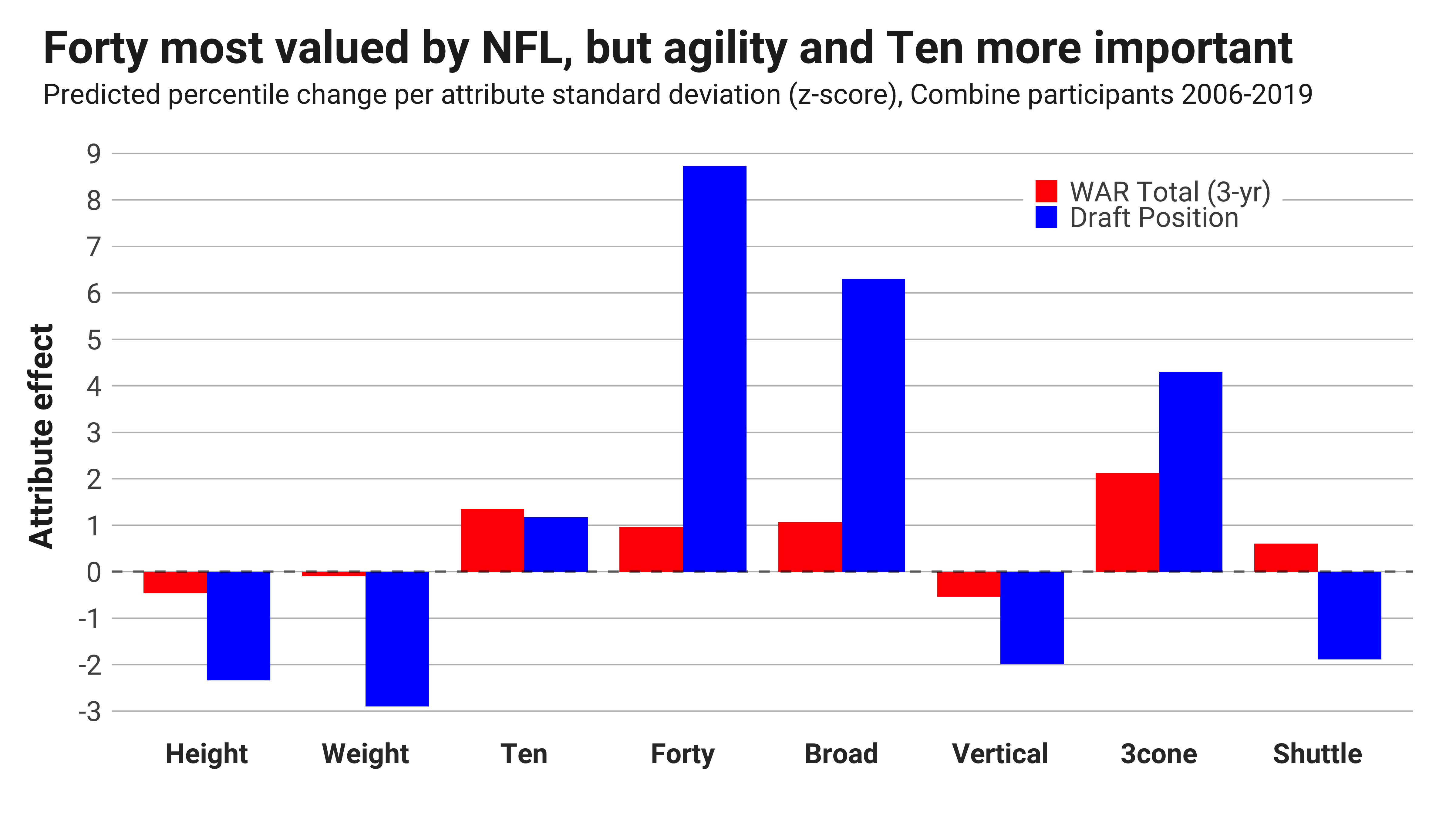The degree of importance of NFL Combine drills and measurements depends on what you’re looking to predict: draft position or actual player value. The former is known for all historical draft picks; the latter more estimation and shared understanding. One of the major recent advancements of player valuation at PFF is translating our player grades to a universal metric of value — wins above replacement (WAR). This analysis is similar to my combine analysis for fantasy football, but now focusing on “real” value in terms of PFF WAR.
Click here for more PFF tools:
Draft Guide & Big Board | Mock Draft Simulator
Dynasty Rankings & Projections | Free Agent Rankings | 2022 QB Annual
Player Grades
The relationship between draft position and WAR is fairly strong, but contrasting the two gives additional insight into systemic errors in over/underweighting certain traits and how teams can more productively harness information gathered at the combine.
METHODOLOGY
This analysis is built on strong work from former Harvard Sports Analysis Collective member Bill Lotter in his series detailing why the NFL Combine actually matters. Lotter used ridge regression to estimate the coefficients for the different Combine results and measure their importance in explaining prospects’ draft positions and value — the latter estimated using Pro Football Reference’s approximate value (AV) over players’ first three seasons.
Approximate value was a tremendous advancement in player valuation and the best public metric available to Lotter at the time of the analysis. The shortcomings of AV mostly relate to its focus on volume and the inability to differentiate between players on the same team for certain position groups that lack traditional stats, such as offensive linemen. Even for position groups with more extensive traditional stats such as tackles and sacks, their production can be more a function of luck and opportunity than adding value. This is where PFF’s WAR metric can truly add the proper context and weighting to the performance of each player. For my analysis, I’m contrasting WAR to draft position, in substitution of AV.
The plots below give the coefficient for each measurement or drill denominated by standard deviation within the position group. The draft positions and WAR for position groups are translated to percentile, giving both the same scale. Each bar below represents the amount of percentile movement you’d expect for a player with one standard deviation above or below the positional average.
The sample for this analysis covers all players who participated in all drills or all but one drill from 2006 to 2019. For players who missed a drill, the value was estimated through a regression on the remaining variables, with a discount applied to the result because of an assumption that the drill was purposely skipped with an expectation of underperformance. Players who participated in the combine and were not drafted are included in the sample with an assumed draft position of 300.
Below each plot, I’ve included a table with the top-15 projections for positional WAR (first three seasons) in the 2006 to 2019 period, including the players’ combine marks and their actual WAR produced. The projections are stated as “Percentile,” meaning the estimated percentile ranking at the position for total WAR over their first three NFL seasons.

QUARTERBACK

The combine drills and measurements have a fairly large impact on draft position, but not much in terms of value in WAR. The biggest disconnect in draft and value effect is for height, where a QB prospect can expect to improve his draft status by nearly six percentiles for every standard deviation, but height has virtually no effect on WAR projection.
There is no measurement or drill in which outperformance matters more for expected value than draft position, but the gaps are smallest for hand size and agility drills like the three cone and short shuttle.
Looking back over the 15 years of data in the model, the highest WAR percentile projections belong to quarterbacks who had big hands and were relatively fast and agile for their weights. Sometimes, that translated into strong draft positions and WAR values, like for Carson Wentz, Cam Newton and Andrew Luck; other times, undervalued quarterbacks with strong athletic traits like Dak Prescott fell through the cracks during the draft.

RUNNING BACK

For running backs, the 40-yard dash has the biggest impact on NFL draft status for any drill or measurement for any offensive position. It’s only the fourth-most impactful drill for projecting running back WAR value, though, trailing the three cone, 10-yard split and broad jump. The vertical jump stands out as the one athletic drill that isn’t correlated with draft status or WAR value, when accounting for a running back's total combine performance.
Exclusive content for premium subscribers

WANT TO KEEP READING?
Dominate Fantasy Football & Betting with AI-Powered Data & Tools Trusted By All 32 Teams
Already have a subscription? Log in




 © 2025 PFF - all rights reserved.
© 2025 PFF - all rights reserved.